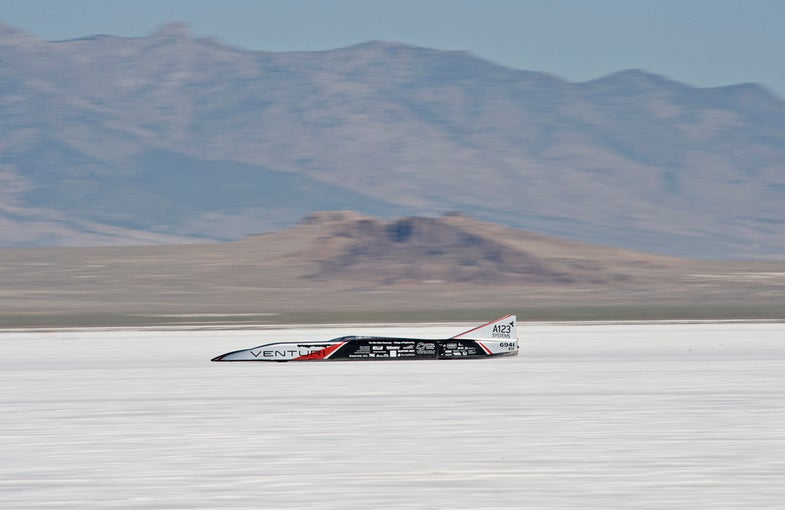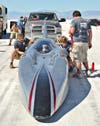Ohio State’s Buckeye Bullet Smashes World Record For Fastest Electric Car
We’re not sure how your week was, but for a team of mechanical engineers, speed junkies, and gearheads from Ohio...

We’re not sure how your week was, but for a team of mechanical engineers, speed junkies, and gearheads from Ohio State it was anything but slow. This week the team took the Buckeye Bullet version 2.5, the team’s battery powered, all-electric landspeed racer out to the Bonneville Salt Flats to break the electric car land speed world record, and they did exactly that, hitting a peak speed of 320 miles per hour.
The Buckeye Bullet team — a collaboration between the Ohio State University Center for Auto Research and a handful of sponsors — has been racing electric cars for well more than a decade, but the VBB2.5, as it’s known, is their first landspeed racer that runs purely on battery power. Last year their hydrogen-fuel-cell-powered VBB2 set a world record for fuel cell-propelled land vehicles by running a mile at an average speed of 302.877 miles per hour (the two-way average was a slightly lower 300.992 miles per hour).
Click to launch the photo gallery
VBB2.5 aimed to set the same kind of speed to beat in the all-electric category. Powered by batteries provided by sponsor A123, VBB2.5 logged an average mile speed of 291 miles per hour. But VBB2.5 wasn’t done. The very next day driver Roger Schroer throttled VBB2.5 to a peak speed of 320 miles per hour, logging a two-way average mile speed of 307.66 miles per hour.
The record still needs FIA certification before it’s official, but consider the bar set — it blew past the previous record for an EV by more than 60 miles per hour. But perhaps the most exciting wrinkle in the Buckeye Bullet story is the fact the VBB2.5 is only a test-bed for the team’s battery technology. VBB3 — a sleek black rocket of a landspeed racer that the team plans to build on top of the experience gained from VBB2.5 — is expected to break all previous records in the not too distant future.
[Buckeye Bullet Blog, Buckeye Bullet]

Priming the Bullet

Building Velocity

Speeding Downrange

Deploying the ‘Chute

The Buckeye Bullet Team

The VBB2